Ephesus’ Brothel Advert – is this one of the oldest?
Could this be the oldest advert? When one visits Ephesus, one cannot miss this marble engraving at the side of the Marble Street (see photos below – all the photos in this blog are taken from my visit in summer of 2018, unless stated otherwise). It is not because it is majestic or eye catching, but because you will see a group of tourists around it listening to the story these engravings have to tell. The stories told varies from how intelligent the owner of the “house of pleasure” was to how to interpret these engravings.


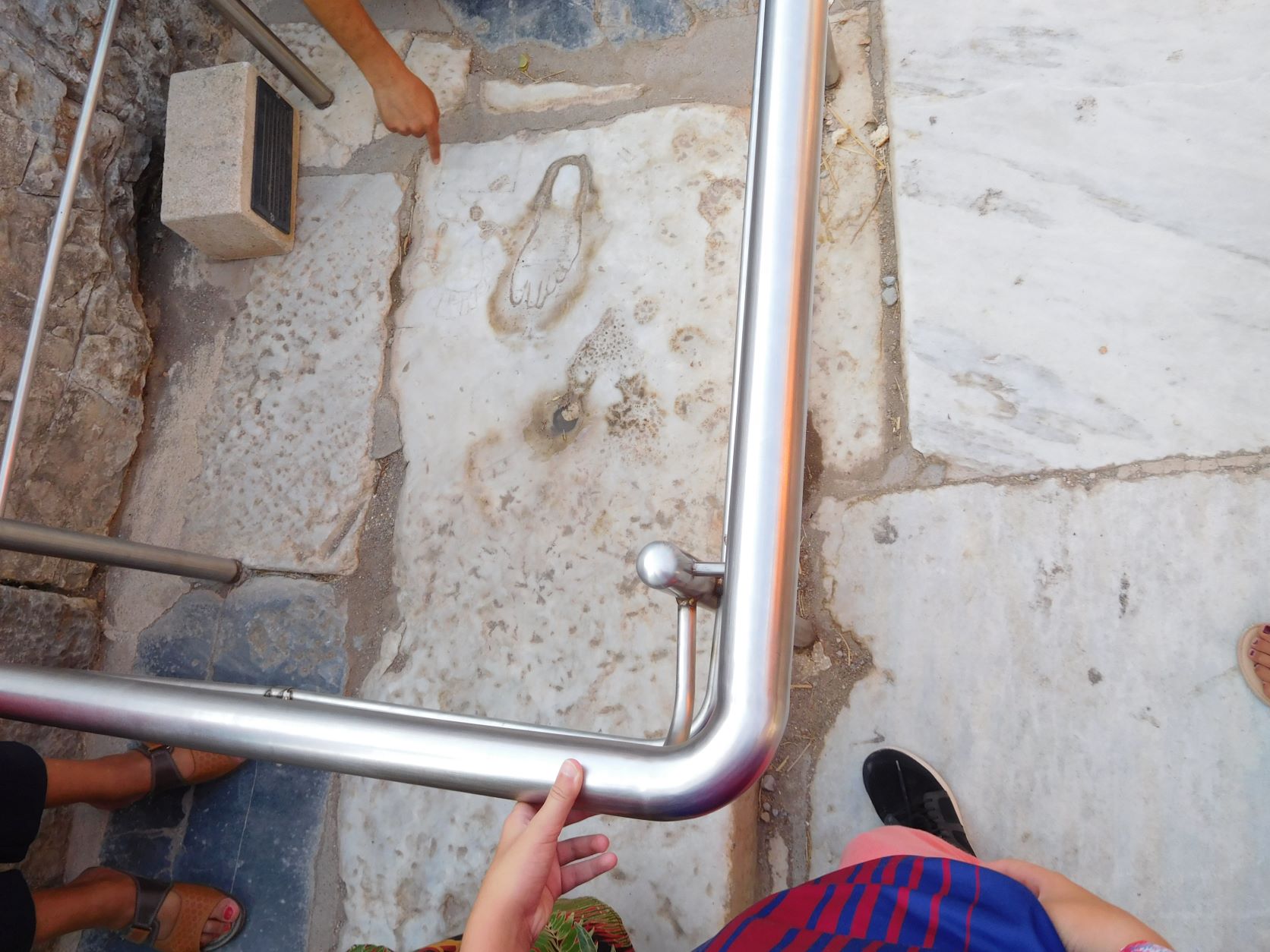
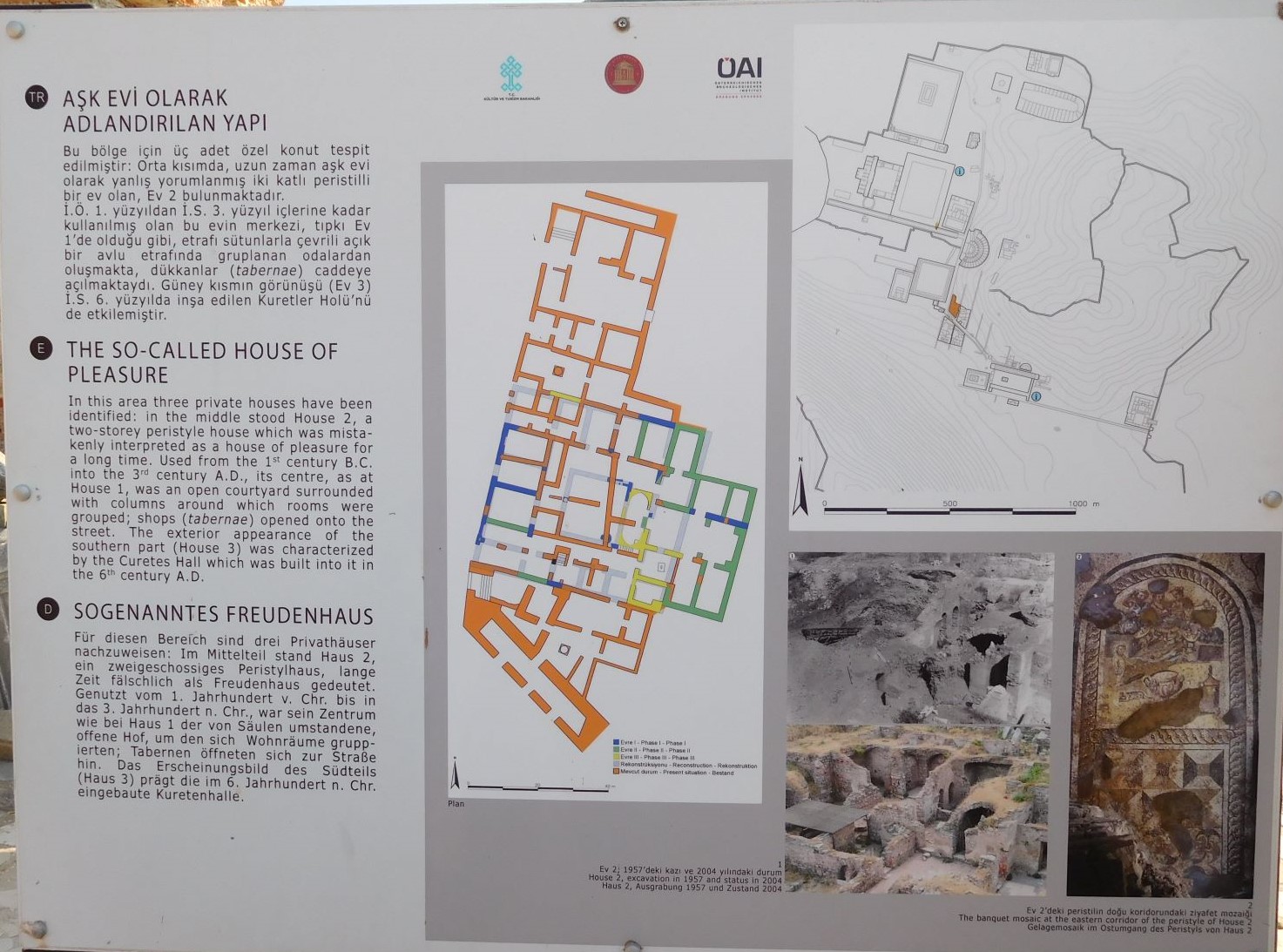
The most common interpretation
Many of the stories you hear have three main elements in common: a heart (find your love), money purse, and a woman’s head with a crown or headdress. I tried to outline these in the image below. Note that the outline is freehand and is not exact. The intention is solely to highlight the image.
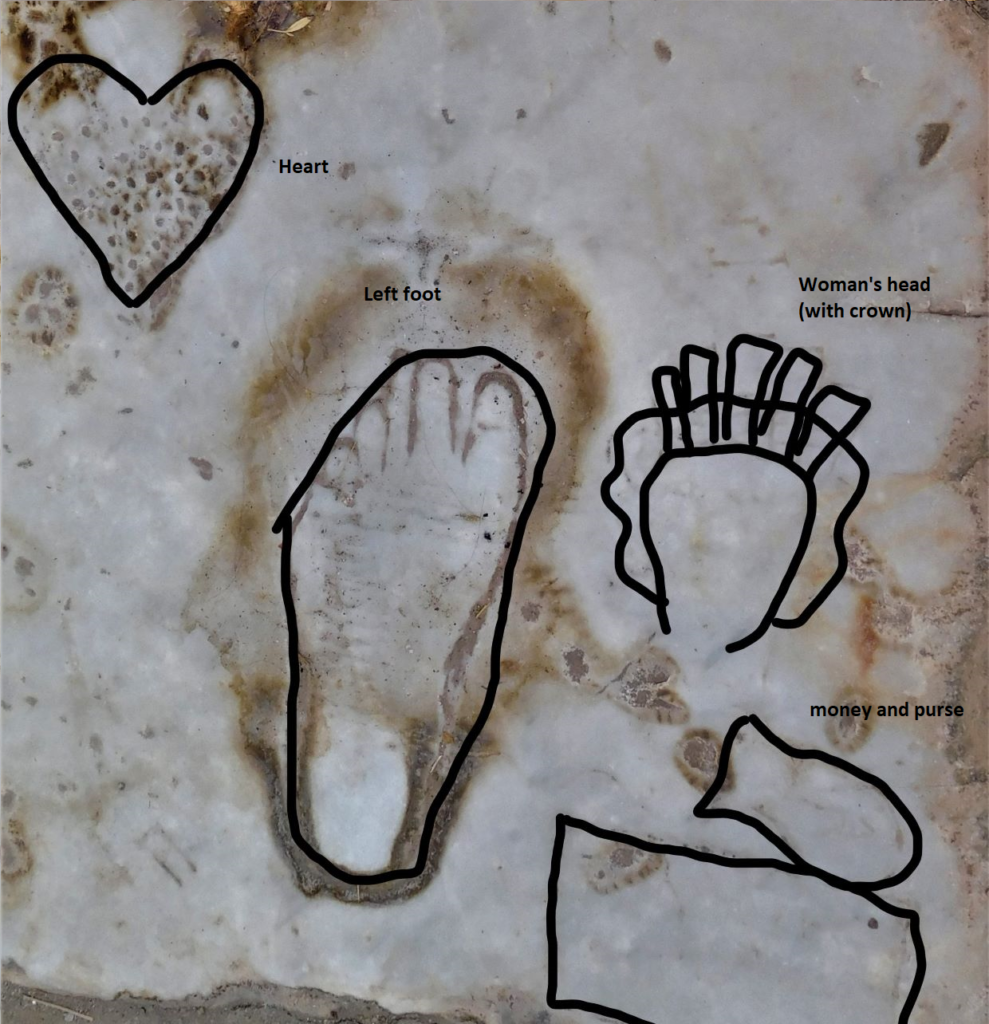
If you search “ephesus footprint description” on the Internet, you would immediately notice a pattern from the description given in the majority of the sites. One, that tells you where to find love if you are ready to pay for it.
But, the fact that I am curious and that I was not totally convinced about the heart ideogram, I did some research about what these engravings may mean. At this juncture, I must clarify that I am by no means an archeologist or a historian, or what I am saying is backed up by academic studies. But at least, in my mind my story makes more sense that the various others I heard on site.
The heart ideogram
A quick search on the Internet reveals that the combination of the heart shape and its use within the heart metaphor was developed in late Middle Ages (see heart symbol in Wikipedia). Thus, it was not used by the 1st century Greco-Romans to mean ‘heart’. If at least the symbol was intended, I would think more on the lines of the fruit representation of the plant silphium (see 2 in image below). Why? Because this plant is believed to be used as a contraceptive (see Pliny the Elder’s Silphium: First Recorded Species Extinction and Ecology in Ancient Civilizations) and it makes sense to be understood in this context. However, I think this has nothing to do with the original message that the owner intended to deliver, because the ‘engraving’ is far off from the other elements of the so-called advert.

The purse
Another misconception is the purse. Weathering and erosion removed a number of details from the original engraving. Older photos reveal a more detailed picture of the woman. They show that the intent was a woman’s bust rather than just a head. Thus, what today looks like a purse, is more the right shoulder of the bust. The photos below shows the erosion along the last few decades.
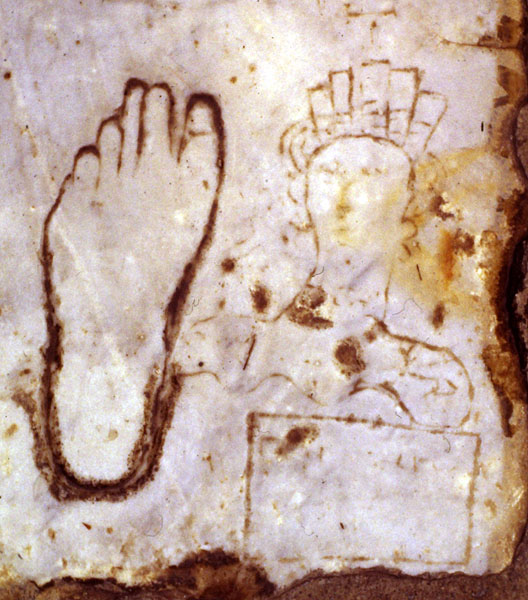
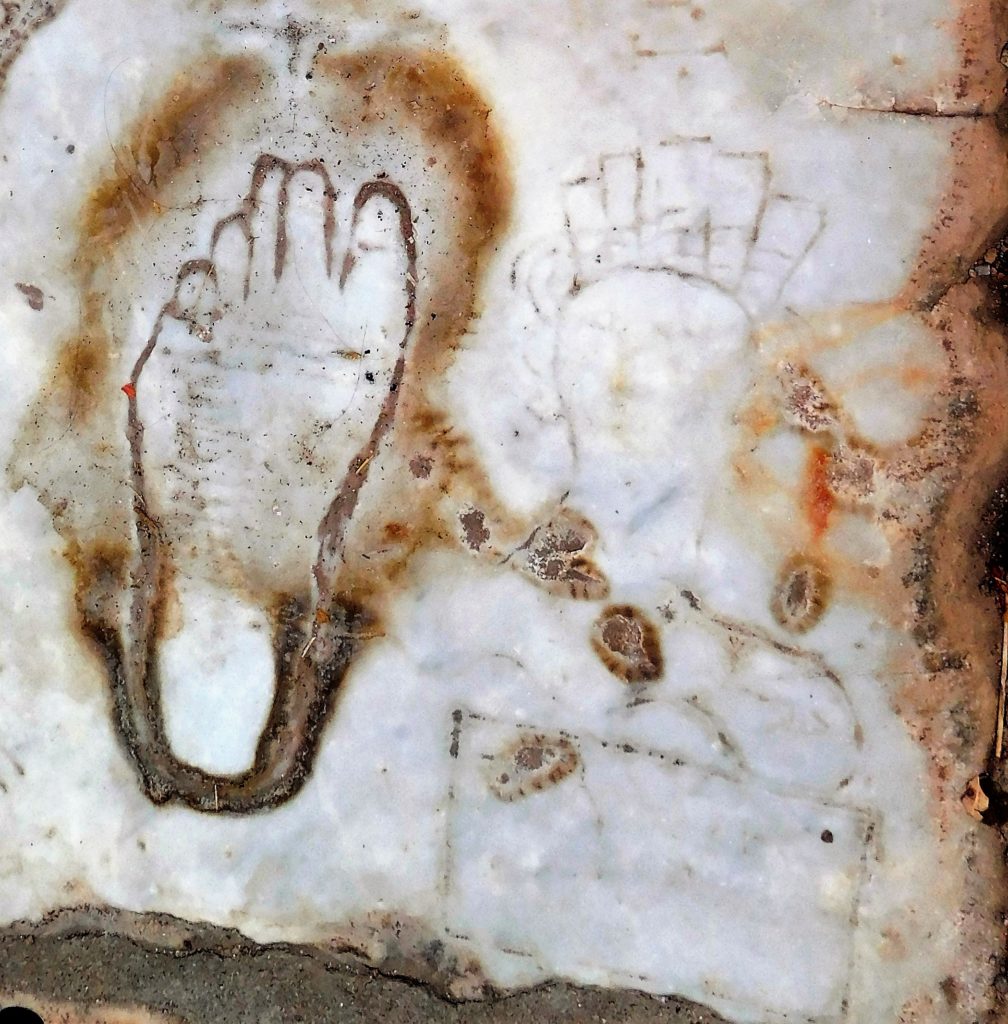
The different symbols in the advert
After removing the heart-like symbol and the purse, we end up with the images outlined in the photo below.
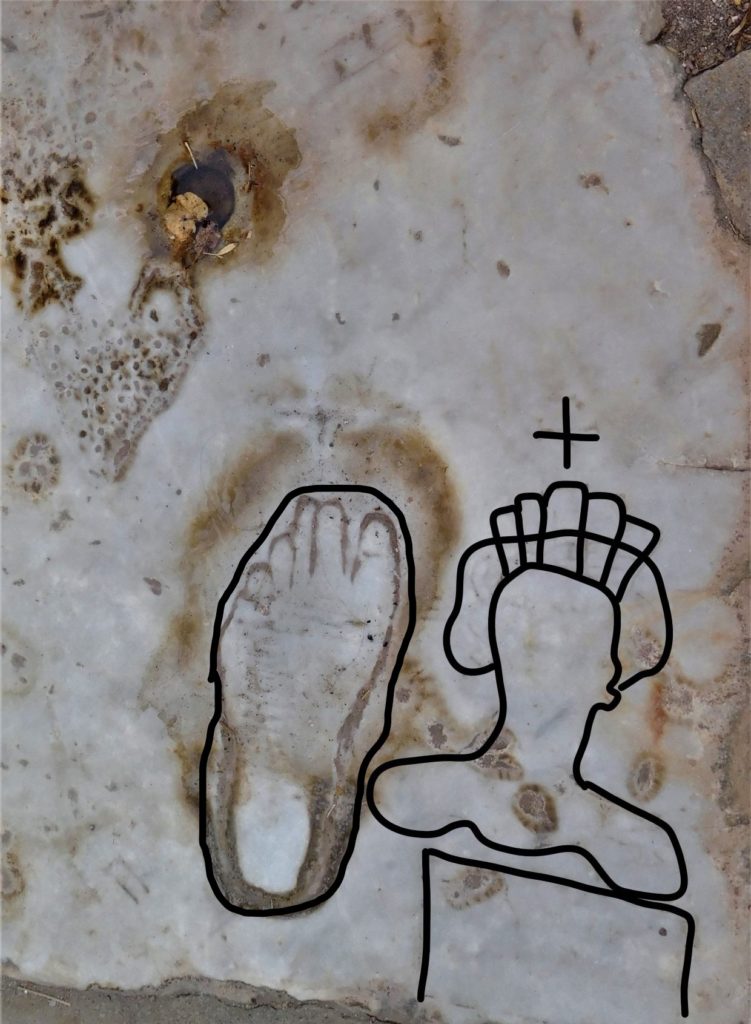
The cross – meaning cross-road.
Left foot – meaning turn left. The erosion around the engraving of the left foot suggests that men used to measure theirs against it, perhaps to confirm certain age requirements to enter the brothel.
Woman’s bust – the headdress suggests her appeal.
The rectangular shape at the bottom – Celsus Library
My Conclusion
So, my conclusion is that the shorter version of the story makes more sense and it reads:
“Once at the cross-road turn left from the library and you will find the ‘house of pleasure’.”